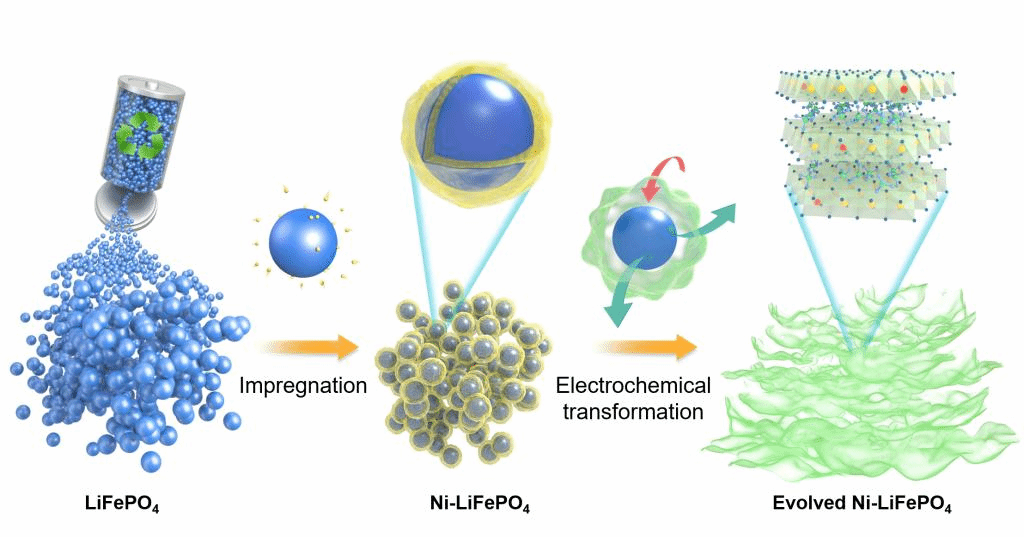Tianjin University’s research team led by Prof. Hu Wenbin and Prof. Chen Yannan successfully converted spent cathode material, LiFePO4, into high-performance electrocatalysts for the oxygen evolution reaction (OER) through a simple impregnation method via in situ electrochemical transformations.
Lithium-ion batteries (LIBs) have been a widely applied power source for portable electronics and electric vehicles owing to their high energy and power density. It is predictable that a large amount of battery waste will pose threats to the sustainable development of future society. Consequently, it is urgent to recycle LIB materials in an efficient and environmentally friendly manner.

Schematic illustration of entire regeneration route for spent LiFePO4.
The Fe element contained in the spent cathode materials is an important metal mineral resource, and is widely applied in industrial catalysis as the main component of many catalysts.
Based on this fact, the team tried to convert spent LiFePO4 into nanocatalysts with high activity. By introducing Ni to activating inert Fe sites in the battery waste, the team has obtained NiFe oxy/hydroxide nanosheets catalysts with high activity.
During the catalytic reaction, the micron near-spherical LiFePO4 particles spontaneously transform into ultra-thin nanosheets, which provides open space for boosting the process. Moreover, Ni and Fe synergistically reduce the required energy for the electrocatalytic reactions and further enhance their catalytic activity.
These nanosheets catalysts overcome the shortcomings of LiFePO4 particles in battery waste, including large area, limited specific surface area and low activity, and show excellent catalytic activity and stability superior to that of the noble metal catalyst in the catalytic performance tests.
This research is likely to help substitute expensive noble metal catalysts with low-cost battery waste. Considering its low material wastage, short production periods, high yield and easy scale-up, the research result has great industrial values, cost advantages and market potential. The low-cost and efficient recycling of battery waste will also contribute to energy saving and emission reduction as well as carbon neutrality in China.
The relevant research work has been published in Science China Materials with the title of Waste to wealth: Defect-rich Ni-incorporated spent LiFePO4 for efficient oxygen evolution reaction.
By Zhang Huiting
Editor: Eva Yin






